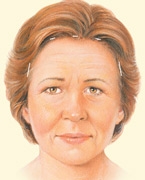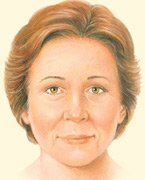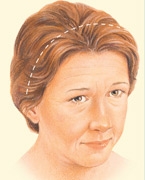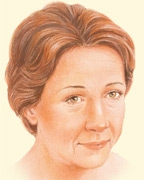Forehead Lift
Also known as a forehead lift, a brow lift minimizes the creases that develop across the forehead, or those that occur high on the bridge of the nose; improves what are commonly referred to as frown lines; and repositions a low or sagging brow.
Consultation with Dr Philip Fleming is the best way to determine how brow lift can help you achieve your personal goals. Dr Fleming is certified by the American Board of Plastic Surgery, Inc and he has more than 25 years of experience in performing brow lift surgery. The following is an overview of brow lift procedures.
Procedural Steps
What happens during brow lift surgery?
Step 1 – Anesthesia
Medications are administered for your comfort during the surgical procedure. The choices include intravenous sedation and general anesthesia. Your doctor will recommend the best choice for you.
Step 2 – The incision
A brow lift may sometimes be performed using an endoscope (surgical video device) and special instruments placed through small incisions made within the hairline. This allows the tissue and muscle beneath the skin to be repositioned, altered or removed, correcting the source of visible creases and furrows in the forehead.
Correction of a low-positioned or sagging brow may be made with or without the use of an endoscope through incisions at the temples and in the scalp.
This technique may be done in conjunction with incisions hidden within the natural crease of the upper eyelids to eliminate frown lines between the brows, on or above the bridge of the nose.
An alternative brow lift technique is the coronal brow lift. The coronal brow lift can pinpoint specific regions of the brow to correct.
This technique involves an incision from ear to ear, lifting the forehead and removing excess skin from the scalp.
Recovery time is often longer than the endoscopic brow lift due to the size of the incision.
The incision lines from a brow lift are well concealed within the hair or natural contours of the face unless they are placed at the hairline to shorten the forehead.
Results appear gradually as swelling and bruising subside to reveal smoother forehead skin and a more youthful, restful appearance.
Step 3 – Closing the incisions
Brow lift incisions typically are closed with:
- Removable or absorbable sutures
- Skin adhesives
- Surgical tape
- Special clips
Step 4 – See the results
Brow elevation may be maintained by the use of:
- Permanent sutures
- Small surgical screws
- Absorbable fixation device placed inconspicuously at the temple
- When your procedure is completed, your forehead may be taped and your head may be loosely wrapped to minimize swelling and bruising. A thin tube may be present to drain any excess blood or fluid that may collect under the skin.








